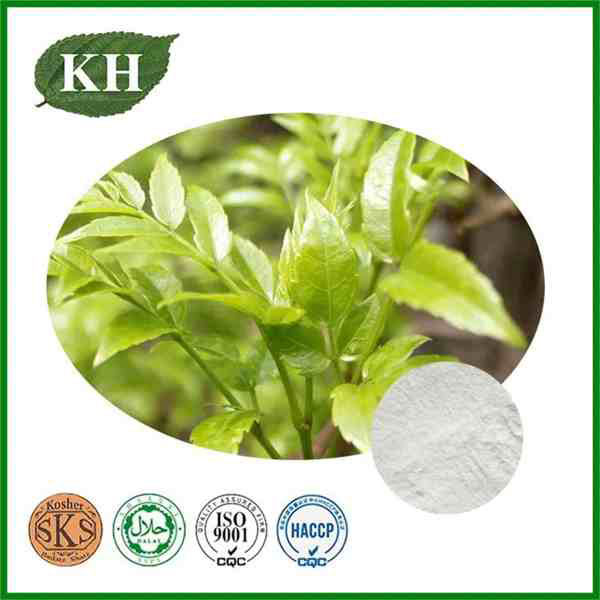Researches on DMY or DHM
2022.09.07
Dihydromyricetin (BSN723 or DMY), also known as ampelopsin, is a flavonoid that has been isolated from a number of plants, including Ampelopsis grossedentata, Cedrus deodara, Hovenia dulcis, and Erythrophleum africanum, that have been used in traditional herbs. Many claims have been made regarding dihydromyricetin’s numerous health benefits including antioxidant properties27, anti-cancer28-30, anti-hypertensive31, anti-inflammatory32, and anti-atherosclerotic effects33. Dihydromyricetin is also indicated as a treatment for alcohol intoxication34 and a preliminary study suggests it as a possible treatment for Alzheimer’s disease35 . A number of published studies provide evidence that dihydromyricetin can protect cells against oxidative injury (for example see, Zhang et al. 200327, Ye et al. 200836, Lin et al. 201437 , Zou et al. 201438). Recently, Jiang et al. (2014)39 examined the effects of dihydromyricetin on oxidative stress and glucose transport activity in a methylglyoxal (MG)-induced PC12 cell line to explore the possibility of using dihydromyricetin for the treatment of MG-induced diabetes-associated cognitive decline. They found that DMY protected PC12 cells against MG-induced apoptosis and glycometabolic disorders, at least in part by restraining the hyperactivation of p-AMPK activity and normalizing the translocation of GLUT4 from the intracellular compartment, resulting in a balance in glucose uptake. Much attention has been focused on the use of dihydromyricetin in the treatment of a variety of cancers and there have been many studies, both in vitro and in vivo, demonstrating inhibitory activity of dihydromyricetin against cell lines of breast cancer40 , liver cancer 29-30,37, melanoma41, osteosarcoma42, and lung cancer43-44. Dihydromyricetin has also shown anticancer activity against bladder cancer45, lung cancer46, and prostate cancer47 xenografts, and showed synergistic effects with adriamycin for treating leukemia xenografts48 . Recently, Chen et al. (2015)49 looked at the effects of dihydromyricetin on nonalcoholic fatty liver disease (NAFLD) in a clinical study. The pathogenesis of NAFLD includes insulin resistance, oxidative stress, mitochondrial dysfunction and inflammation in the liver. The study looked at inflammatory mediators and biomarkers of NAFLD as well as glucose and lipid metabolism. They found that while dihydromyricetin did not alter the severity of fatty infiltration in the liver, it did produce significant improvements in several liver enzymes and reduced serum levels of several markers including tumor necrosis factor-alpha, cytokeratin-18, and fibroblast growth factor 21. They also found that the HOM-IR level was decreased in dihydromyricetin treated patients, but insulin and C-peptide levels were not affected. Levels of low-density lipoprotein-cholesterol (LDL-C) and apolipoprotein B (Apo B) were also significantly decreased by dihydromyricetin, but the total cholesterol, triglyceride, high-density lipoprotein-cholesterol (HDL-C), and Apo-A-I concentrations did not significantly differ between treated and control groups. Other evidence that dihydromyricetin can affect glucose metabolism include studies that found that DMY activated insulin signaling and increased glucose uptake in skeletal muscle in vitro and in vivo 50,51 . Recent studies have begun to offer clues about dihydromyricetin’s mechanism of action. It is now known that a number of cell signaling pathways are affected by dihydromyricetin. Zou, et al. (2014)38 found that dihydromyricetin fed to rats for 7 days increased the expression of peroxisome proliferator-activated receptor γ coactivator 1α (PGC-1 α) in skeletal muscle. PGC-1α is known to regulate irisin, an exercise-induced myokine that can stimulate the browning of white adipose tissue. In a follow-up study (Zhou, et al., 2015) 5 2 the effect of dihydromyricetin on irisin secretion through the PGC-1 α pathway was investigated in vivo (in rats and humans) and in vitro (L6 myotubes). The results were an increase in irisin secretion with the administration of dihydromyricetin. Dihydromyricetin has also been found to increase the levels of phosphorylated AMP activated protein kinase (AMPK) and Ulk1, and decrease phosphorylated mTOR levels50. The same group also found that dihydromyricetin increased levels of peroxisome proliferator-activated receptor coactivator-1α (PGC-1α ), and Sirt3 in skeletal muscle in vitro and in vivo51 . Jiang, et al. (2014) found that dihydromyricetin ameliorates the oxidative stress response induced by methylglyoxal via the AMPK/GLUT4 signaling pathway39.

 Share
Share


